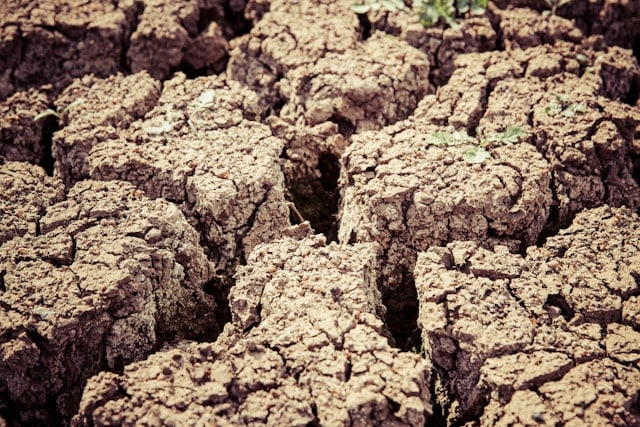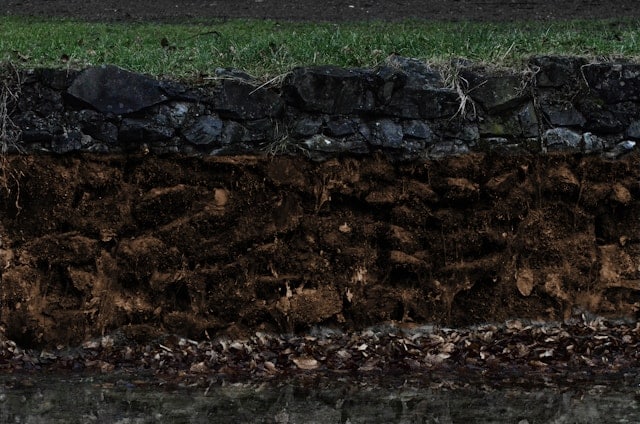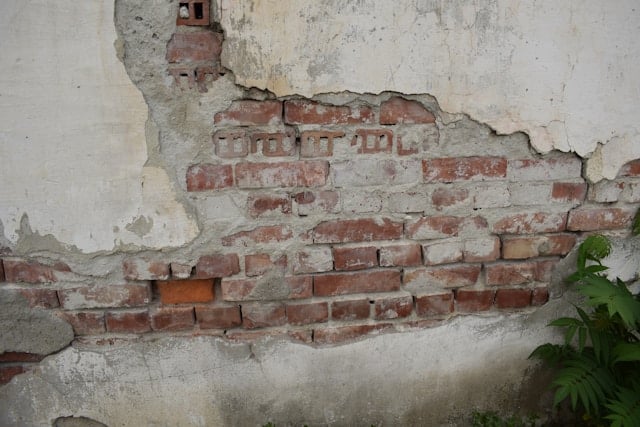Ever noticed your garden looking dull or your lawn refusing to stay green, no matter how much you water it?
The culprit might be lurking right under your feet: compacted soil. When the ground gets too dense, air and water can’t move freely, choking plant roots and weakening your soil’s natural structure.
Compacted soil doesn’t just affect your plants; it also impacts your property’s stability and drainage. From puddles that never seem to go away to uneven grass patches, these are your soil’s SOS signals.
At Helicon, we’ve seen how Florida’s sandy and clay-heavy soils can lose strength over time, especially after construction or heavy rain. That’s why our team uses proven soil stabilization and compaction grouting techniques to restore firmness and protect foundations for the long haul.
In this blog, we will talk about:
- How to recognize the key warning signs of poor soil compaction
- Why soil structure matters for plant and foundation health
- The most effective methods to fix and prevent future compaction
Recognizing these signs early helps you save both your landscape and your structure from long-term damage.
Understanding Soil Compaction
Soil compaction happens when the soil becomes too dense and hard for plants to grow well. It can block water from soaking in and stop roots from spreading.
What Is Soil Compaction?
Soil compaction means soil particles get squeezed tightly together, reducing the space between them. This space, called pore space, is important because it lets air and water move through the soil. When soil is compacted, it becomes harder and denser. This makes it difficult for roots to grow deep and for water to soak in. The soil may look firm and crusty on the surface. You might also notice water pooling after rain because it can’t drain well.
How Soil Compaction Occurs
Compaction happens mostly when heavy weight presses down on soil, especially if the ground is wet. This can be from foot traffic, heavy machinery, vehicles, or even repeated lawn mowing.
Wet soil is softer and easier to compress. In Florida, where Helicon works, weak soils can become compacted quickly under the pressure of construction or landscaping. This reduces the soil’s natural ability to support plants and any structures built on it.
Effects of Soil Compaction on Plant Growth
Compacted soil limits how deep roots can grow. Plants get less water and air, which are needed for healthy growth. You might see stunted plants or poor crop yields. Water can’t soak in properly, causing runoff and erosion. This can wash away valuable topsoil and lead to puddles on the surface.
Key Signs of Poor Soil Compaction
Poor soil compaction affects how water moves, how roots grow, and how easy it is to work the soil. You might notice water pooling on the surface or small plants struggling to take root. These issues can limit plant health and the soil’s ability to support stable foundations or gardens.
Slow Water Infiltration
Compacted soil holds less space for water to soak in, making water move slowly or run off. After rain or watering, you may see puddles or wet spots that don’t disappear quickly. This slows down the soil’s ability to feed plants and can cause erosion.
When water can’t absorb well, roots don’t get the moisture they need to grow deep. Over time, the lack of proper water flow reduces soil fertility and causes problems for landscaping or construction work.
Stunted Root Development
Roots need loose, healthy soil to spread and grow deep. When soil is compacted, it becomes dense and hard to penetrate. You might notice plants that look weak or have yellow leaves because their roots aren’t getting enough oxygen and nutrients.
Stunted roots also mean less stability for plants and trees. This can lead to poor growth or plants that are easily stressed by heat or drought. In foundation work, weak soil can cause settling or shifting, which impacts structural safety.
Surface Water Pooling
Water pooling on top of the soil is a clear sign of compaction. Instead of soaking into the ground, water stays in puddles, causing wet spots and poor drainage. This surface water can damage plants by drowning roots and inviting fungal diseases. It also increases runoff, which can wash away valuable topsoil or hurt nearby structures.
Difficulty in Tilling
If you try to dig or till your soil and find it hard or nearly impossible, compacted soil might be to blame. The soil feels dense and resists breaking apart, slowing your gardening or construction prep. This hardness comes from heavy pressure applied when the soil was wet.
It not only makes planting difficult but also means roots will face the same resistance underground. Regular tilling won’t fully fix this without treating the soil properly to restore porosity.
Visual Indicators of Compaction Issues
When soil is compacted, its surface often shows clear signs that something is wrong beneath the ground. You might see hard soil, rough patches in your lawn or garden, or cracks forming on the surface. These indicators can tell you where the soil is not allowing water or roots to move freely.
Crusty or Hard Soil Surface
If your soil feels hard and dry on top, it’s a sign that compaction might be an issue. This crust forms because the soil particles are pressed tightly together. It prevents water from soaking in and keeps roots from growing down.
You may notice that rainwater pools or runs off instead of absorbing. This also makes it tough for plants to get the moisture and nutrients they need. You can test this by pushing a stick or screwdriver into the soil—if it’s difficult, your soil is likely compacted.
Patchy or Sparse Vegetation
When soil is compacted, plants can struggle to grow evenly. You might see bare spots or areas where grass and plants grow weak and thin. This happens because roots can’t spread or dig deep enough to find water and nutrients.
Weeds often take over these patches, filling space where healthier plants can’t survive. The overall growth of your garden or lawn looks uneven because some areas have better soil conditions. If you see this pattern, compacted soil could be the root cause.
Presence of Soil Cracks
Cracks in the soil surface often mean the soil is dry and tight from compaction. When compacted soil dries, it shrinks and splits, creating visible breaks in the ground. These cracks can allow water to run off quickly, reducing absorption even more. These openings also show that the soil structure isn’t stable.
Cracked soil struggles to support plant roots and can worsen with time if not treated. Watching for these cracks gives you an early warning that soil stabilization or repair might be needed.
Physical and Chemical Symptoms
Soil compaction is reflected in how dense and hard the soil feels. It changes the way water and air move through the ground and affects the chemical balance your plants need.
Increased Soil Bulk Density
Bulk density measures how much soil mass fits into a specific volume. When soil is compacted, its particles are crushed closer together, making it heavier and harder than usual. You might notice that digging becomes difficult or tools sink less easily into the ground.
Compacted soil also holds less space for air and water, which stresses roots and slows plant growth. Measuring bulk density with a soil core test can confirm if your soil is too dense. If your soil bulk density is high, water doesn’t move well, and roots have trouble expanding. This leads to patchy plants and poor garden health.
Reduced Soil Porosity
Porosity means the amount of empty space between soil particles. These spaces hold air and water. When soil compacts, it loses much of this space. Lower porosity means water drains slowly, or sometimes pools on the surface.
You might see puddles after light rain or water that just sits without soaking in. Roots rely on these spaces to grow deep. When there isn’t enough room, roots stay shallow, causing weaker plants. These conditions also limit beneficial soil microbes and can encourage weeds.
Low Oxygen Availability
Compacted soil blocks air from reaching plant roots. Roots and soil organisms need oxygen to thrive. When soil pores shrink, oxygen levels drop. You may notice plants wilting even when the soil seems moist.
Low oxygen slows root activity and nutrient uptake, leaving your plants unhealthy. In extreme cases, the soil may smell bad because of a lack of oxygen, causing harmful bacterial activity. Properly aerated soil improves root health and overall plant strength.
Impact on Plant Health and Yield
Poor soil compaction affects how your plants grow and how much they produce. It makes it harder for roots to spread and limits water and nutrients from reaching them. These problems show up in the health and color of your plants and often lead to smaller harvests.
Yellowing or Wilting Plants
When soil is compacted, roots struggle to access oxygen and water. This can cause your plants to turn yellow or wilt even when the soil seems moist. The compacted soil blocks water from soaking in properly, so plants don’t get what they need beneath the surface.
You might notice leaves looking dull or unhealthy early in the growing season. This symptom often means roots are stressed or damaged because they can’t grow deep. It can also leave plants more open to pests and disease since they are weaker.
Poor Crop Yield
Soil compaction can reduce your crop yield by up to half. This happens because roots can’t spread out easily, which limits how much water and nutrients your plants absorb. If roots stay shallow, plants don’t grow as strongly or produce as much fruit, grain, or vegetables.
Yield loss is often worse during dry seasons. Compacted soil holds less water, so plants suffer more when rain is scarce. This effect can vary based on soil type and how severe the compaction is.
Assessing Compaction Severity
To understand how serious soil compaction is, you need practical ways to measure it below the surface. These methods reveal how compacted the soil is, helping you decide when and how to improve it.
Using a Penetrometer
A penetrometer is a simple tool that measures how hard soil is by pushing a metal rod into the ground. As you push it down, the tool gives a reading of soil resistance. You should insert the penetrometer about 6 to 12 inches deep, slowly and evenly. If you feel a lot of resistance, that means the soil is compacted and hard for roots to grow.
Here’s what to watch for:
- Low resistance: Good, loose soil
- Moderate resistance: Some compaction; watch the plants
- High resistance: Strong compaction; action needed
Using a penetrometer regularly can show where your soil needs attention to avoid bigger problems, such as poor water drainage or poor plant growth.
Conducting a Soil Profile Examination
Digging a small hole in your soil lets you see how compacted it is layer by layer. Use a spade or trowel to dig about 12 inches deep. Look for these signs:
- Dense, hard layers: Soil that feels packed and tough to break shows compaction.
- Clods or large chunks: These suggest the soil has been compacted and does not break down easily.
- Poor root growth: Compaction may block their path if roots stay near the surface or look sick.
- Wet spots or standing water: Water that pools on the surface indicates poor absorption due to compaction.
This hands-on check helps you see the problem clearly. It’s also useful for planning how to fix your soil, such as adding organic matter or aerating.
Common Causes of Poor Soil Compaction
Poor soil compaction occurs when soil particles are pressed tightly, reducing space for air and water. This lowers soil health and plant growth. Several factors can lead to this problem, affecting how soil behaves and supports plants.
Heavy Machinery Use
Using heavy machinery on your land can push soil particles together deeply. Equipment with high axle loads, like tractors or construction vehicles, can cause compaction below 12 inches. This pressure makes it hard for roots to grow and limits water movement.
The risk grows if the soil is wet when machinery is used—wet soils, especially those high in clay, compact much more. Over time, this reduces soil quality and decreases crop or plant health. To avoid this, try limiting heavy equipment traffic to dry soil and using lighter machines when possible.
You can also divide your land into specific paths for machinery to reduce overall soil damage.
Frequent Foot Traffic
Constant walking or standing in the same areas compacts the soil on the surface. This is common in gardens, lawns, and pathways. When soil particles are pressed together, air pockets close, reducing oxygen to roots. Clayey soils are more vulnerable to this kind of compaction, especially if there is little vegetation.
Bare soil tends to compact faster under foot traffic and heavy rain. Protect your soil by creating designated walking paths or adding mulch. Mulching and keeping plant debris in place help cushion the soil, reducing compaction over time. Regularly loosening compacted spots can also encourage healthier plant growth.
Long-Term Effects of Unresolved Compaction
When soil compaction is left untreated, it can cause ongoing problems that affect your property’s stability. Over time, compacted soil loses its ability to absorb water well. This leads to more runoff and less water reaching roots, which can harm plants and trees growing on your land. Compaction also restricts root growth by making the soil too dense.
Roots have trouble spreading out and gathering nutrients. This weakens plants and can cause slow or uneven growth. Here’s what unresolved soil compaction can cause over time:
- Poor water infiltration — More surface water, less moisture for roots
- Weaker root systems — Plants struggle to grow deep and strong
- Increased soil erosion — Loose topsoil washes away more easily
- Reduced soil aeration — Less oxygen available for healthy roots
If your soil remains compacted, problems may continue beneath the surface even if above-ground symptoms seem mild. This hidden damage can lead to costly repairs later.
Best Practices for Prevention and Remediation
Avoid working on wet soils to prevent soil compaction. When the ground is soft, heavy equipment or foot traffic can easily compact it. You can also protect your soil by covering it with plants or mulch to keep it loose and healthy. Using controlled traffic lanes helps minimize the areas where soil gets compacted.
By limiting equipment to specific paths, you reduce damage to the rest of your soil. Also, lowering tire pressure or using wider tires spreads weight more evenly, which helps prevent compaction. If your soil is already compacted, you may need to break it up.
Tillage or aeration tools can loosen compacted layers, allowing air and water to reach roots again. In some cases, adding organic matter like compost can improve soil structure over time. Small steps like these keep your soil strong. Good soil health means your plants, lawn, or foundation have a solid base to grow or rest on.
Wrapping It Up
Compacted soil might initially seem harmless, but over time, it can weaken your plants, landscape, and even your property’s foundation. The good news?
It’s completely fixable with the right approach. Whether your lawn struggles to drain after rain or your foundation shows early signs of settling, addressing poor soil compaction now saves you from bigger problems later.
At Helicon, we specialize in soil stabilization and compaction grouting tailored to Florida’s unique soil conditions. Our experts don’t just treat the surface; we strengthen what’s beneath it. Don’t wait for uneven ground or water pooling to worsen.
Schedule your free inspection with Helicon today and ensure your soil and home stay strong, stable, and healthy.
Frequently Asked Questions
Soil compaction might sound simple, but its impact can be massive — from weaker lawns to unstable foundations. Many homeowners and property managers have similar questions about identifying, testing, and improving compacted soil. Here are some clear, practical answers that go beyond what we’ve already covered in the blog.
How can I tell if my soil needs professional stabilization rather than DIY aeration?
If you’ve tried loosening or aerating and still see pooling water or cracks reappearing, the compaction likely runs deep. In such cases, professional soil stabilization or compaction grouting — like Helicon’s — is needed to restore long-term soil strength.
Does Florida’s climate make soil compaction worse?
Yes. Florida’s heavy rainfall and sandy or clay-rich soils make compaction more common. When wet soil gets compressed by machinery or foot traffic, it loses its structure quickly, leading to uneven ground and drainage issues.
Is compacted soil only a problem for plants, or can it affect foundations too?
Compacted soil can absolutely affect foundations. Dense soil loses its ability to support heavy loads, which can cause foundation settling or cracks. That’s why soil stabilization is crucial before or after construction.
What’s the best time of year to fix soil compaction issues?
Early spring or late fall is ideal because the soil is slightly moist but not waterlogged. This allows aeration and treatments to be more effective, giving soil structure time to recover before heavy summer rains.
Can adding compost or organic matter permanently fix compaction?
Organic matter helps, but it’s not a complete fix if the compaction runs deep. Compost improves surface structure and drainage, but for lasting results, combining it with mechanical aeration or professional stabilization gives better results.
Why choose Helicon for soil stabilization in Florida?
With over 20 years of local experience, Helicon specializes in compaction grouting and soil stabilization that strengthen weak, compacted soils under homes and commercial structures. Our free inspections and tailored solutions ensure your property stays stable for years to come.





